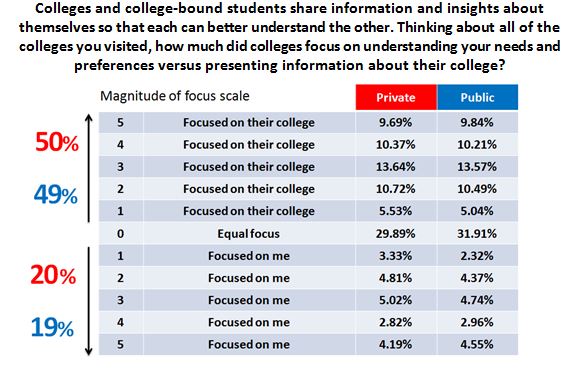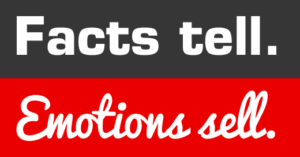 When prospective students are searching for a college they have a lot of questions. They need information. They need to know about programs, costs, opportunities and time frames. They seek facts.
When prospective students are searching for a college they have a lot of questions. They need information. They need to know about programs, costs, opportunities and time frames. They seek facts.
Prospective students need facts but their college selection decision is most often going to hinge on how they feel about their chosen college – and those they rejected.
Most colleges know this. They experience it in every recruiting cycle. They hear students say, “I enrolled here because it felt like home.” Or, “I loved the campus atmosphere.” Or, “I felt like I belong here.”
Here’s what colleges DON’T know: Exactly what makes a campus feel like home? What makes for a great campus atmosphere? What makes students feel like they belong? What triggers a student to declare that this college, above all others, is the right fit?
Longmire and Company’s just-announced national co-sponsored higher education study has been launched to explore – in depth – the topic of emotional motivators in college selection.
Colleges know that these emotional motivators exist. They just don’t have clear and precise data about what makes students feel a particular way and the relative impact those feelings have on enrollment decisions. We will be taking a deep dive into this topic in our latest co-sponsored study, “Emotional Motivators: How to increase and control your enrollment by getting a deep and accurate understanding of how students really feel about your college.”
This groundbreaking study will explore how students feel and, more importantly, uncover why they feel that way, to give you a deeper understanding of the students you’re trying to recruit. The actionable insight yielded by this study will give you greater control over your conversations with prospective students, better ability to craft sharper mass marketing messages, and more direction to design highly productive campus visit experiences. Unlike any other higher education research to-date, Emotional Motivators will explore the emotions and perceptions that factor into the college selection process. This study, like our previous co-sponsored studies, will provide you with actionable information you can use immediately and effectively.
We hope you will join a prestigious list of co-sponsoring colleges and universities, large and small, and participate in this study. Co-sponsors find our studies valuable because of the wealth of new insight they gain about their individual pools of prospective students – insight they can use to drive action and change.
As a co-sponsor you receive a comprehensive set of tabulations relating to your pool of students, as well comparative data of others in your cohort and other market segments. You’ll also receive the national summary report before its widespread release.
In addition, Longmire and Company Enrollment Strategists will prepare and deliver a fully-customized webinar to review your individual findings and offer recommendations for specific actions you can take to improve your communications, conversations and interactions with prospective students. For these webinars co-sponsors often assemble staff from admissions, marketing, financial aid and faculty to benefit from the new perspectives, ideas and actions that these studies yield.
We have been told many times by colleges that the webinar alone is worth the small cost of getting on board!
What You’ll Learn From This Study:
- Are student feelings about you in line with what you want them to be?
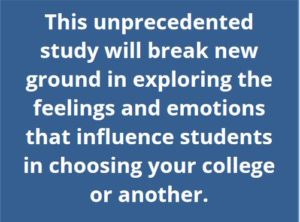
- Positive and negative feelings students have about a wide variety of attributes and characteristics of your college.
- Positive and negative feelings of other colleges they’ve considered.
- The relative influence of student feelings in college selection.
- How admission counselors can effectively uncover and respond to the feelings of prospective students.
- How prospective student feelings can be captured and categorized for use in mass communications.
- How to have richer, more productive conversations that will lead to enrollment.
It can be very expensive for an individual college or university to do the scope of research needed to get the answers and insight we get. But by co-sponsoring with other institutions you get the best of both worlds: Data and insight about your pool of prospective students coupled with a national picture, resulting in a very comprehensive study for a fraction of what it would cost to do it on your own. These studies are affordable at just $2,975 (all inclusive) per institution.
I hope you’ll join in and be a part of this important new study. You’ll be glad you did.
For more information or to reserve your participation in this study, contact Rick Montgomery (913) 492-1265 ext. 708 or (rmontgomery@longmire-co.com), Nick King (913)492-1265 ext. 711(nking@longmire-co.com), or me at (913) 492-1265 ext. 709 (blongmire@longmire-co.com). Colleges are signing up now so we encourage you to contact us soon if you are thinking about participating. CLICK HERE FOR COMPLETE INFORMATION.
Continue the conversation on Twitter @LongmireCo. Be sure to Subscribe to Versions of Conversion today so you don’t miss any of this highly-valuable information.
 Bob Longmire is President of Longmire and Company, Inc. He is a recognized expert on the topic of how prospective students and parents form their college selection decisions – and how colleges can use that knowledge to grow and control their enrollment. He can be reached at (913) 492-1265, ext 709 or at blongmire@longmire-co.com. Connect with Bob at Linkedin/in/boblongmire.
Bob Longmire is President of Longmire and Company, Inc. He is a recognized expert on the topic of how prospective students and parents form their college selection decisions – and how colleges can use that knowledge to grow and control their enrollment. He can be reached at (913) 492-1265, ext 709 or at blongmire@longmire-co.com. Connect with Bob at Linkedin/in/boblongmire.

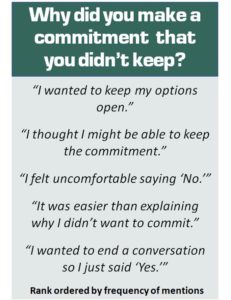
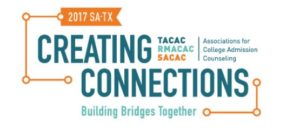 Join us for our presentation of the “Hidden Influences” study on Monday, April 24 (9:45 am) at the TACAC/RMACAC/SACAC Super Conference in San Antonio. Bob Longmire, and study co-sponsors Jeffrey Fuller, University of Houston, and Troy Johnson, University of Texas – Arlington, will share their unique insights on the data and the best practices they have uncovered.
Join us for our presentation of the “Hidden Influences” study on Monday, April 24 (9:45 am) at the TACAC/RMACAC/SACAC Super Conference in San Antonio. Bob Longmire, and study co-sponsors Jeffrey Fuller, University of Houston, and Troy Johnson, University of Texas – Arlington, will share their unique insights on the data and the best practices they have uncovered. Rick Montgomery is as an Enrollment Strategist at Longmire and Company. With over 20 years in higher education marketing, he brings an innovative and dynamic approach to helping colleges and universities meet their enrollment goals. Rick can be reached at 913/492.1265 x.708 or via email at
Rick Montgomery is as an Enrollment Strategist at Longmire and Company. With over 20 years in higher education marketing, he brings an innovative and dynamic approach to helping colleges and universities meet their enrollment goals. Rick can be reached at 913/492.1265 x.708 or via email at 
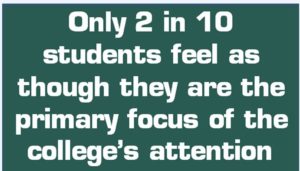 matters in your ability to grow and control enrollment,” we asked over 18,000 college-bound students whether they felt the colleges they considered were more focused on understanding their needs and preferences or more focused on presenting information about their institutions.
matters in your ability to grow and control enrollment,” we asked over 18,000 college-bound students whether they felt the colleges they considered were more focused on understanding their needs and preferences or more focused on presenting information about their institutions.